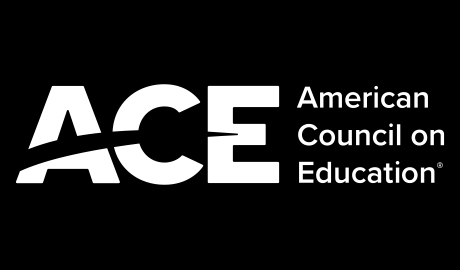Intro to Macroeconomics – Online Higher Education Course
This online Intro to Macroeconomics course examines how the economy shapes every aspect of our modern world: from the international order to political systems… even future interplanetary economics! Students discover how the laws of supply and demand play out in real life, explore the relationship between national economies and the global financial system, and even make sense of the US dollar.
A New Way to Learn Macroeconomics
In Intro to Macroeconomics, students will:
- Define the scope of macroeconomics and the kinds of questions it helps us answer
- Describe foundational concepts such as GDP, unemployment, and inflation, and use these to explain international differences in growth and development
- Compare and contrast Keynesian and neoclassical perspectives, including their preferred fiscal and monetary policies
- Understand the causes of economic growth and business cycles
Gen Ed That Simply Works

Turnkey Courses
With online, asynchronous courses that are ready to run, you can deliver high-quality learning and outcomes predictably and affordably.

Curriculum You Can Trust
Every course is recommended by the American Council on Education. So you can trust the curriculum meets rigorous academic standards.

Captivating Student Experience
Students enjoy cinematic lectures from experts in the field and interactive, mastery-based learning—all in a flexible, 14-week course that fits their schedules.

Unlimited Enrollment
With no minimum or maximum enrollment, students get the courses they need when they need them, so they stay on track in their degree program.
Discover the magic of learning with Intro to Macroeconomics
Watch the Trailer
How money moves our world.
-
Key Concepts
-
Learning Outcomes
-
Assessments
-
Educator Support
-
World-Class Instructors
Key Concepts Covered
-
Introduction to Macroeconomics
- A first look at the economy
- Theory of demand
- Theory of supply
- Measuring the economy
- Modeling the macro economy
- Economic growth
- Business cycles
-
The Government, Money, and Economic Perspectives
- The Keynesian perspective
- The expenditure multiplier
- Government budgets
- Fiscal policy
- The Neoclassical perspective
- Automatic price adjustment expectations
- Money vs. credit
- Money markets and the financial system
-
The Central Bank and Monetary Policy
- Evolution of money management
- How the Central Bank conducts monetary policy
- Normal crisis and financial crisis
-
Government Debt and International Finance
- Government borrowing, budget deficits, and public debt
- The Phillips curve
- Problems with discretionary fiscal policy and monetary policy
- How the foreign exchange market works
- Rates of return
- Interplanetary economics
Learning Outcomes
-
Course Learning Outcomes
- Define the scope of macroeconomics. What kinds of questions does it help us understand?
- Describe foundational concepts that may influence economic growth—such as GDP and its growth rate, unemployment, and inflation—and use these to explain international differences in growth and development.
- Apply the AD-AS model to analyze how the macroeconomy operates.
- Understand the causes of economic growth and business cycles.
- Understand the role of government in a market economy; identify the major sources and uses of government expenditures.
- Understand the importance of the financial system in helping an economy work more efficiently; explain how the banking system works.
- Compare and contrast the major macroeconomic perspectives, Keynesian and neoclassical, to understand each perspective’s preferred fiscal and monetary policies to address macroeconomic problems.
- Explain how international finance affects the workings of the world’s economies and real world macroeconomic policy.
Assessments
-
Quizzes and Exams
- Course quizzes and exams consist of multiple choice, true/false, select all that apply, matching, and open-response questions. All are autograded by the LMS, so educators can spend more time with students and less time grading.
Educator Support & Dashboard
-
Access All Course MaterialEducators and administrators have full access to the Partner Dashboard and all course material from Day 1.
-
View Course MilestonesEasy-to-use tools show milestone dates and deadlines for the cohort, as well as the full weekly course schedule.
-
Monitor Student Progress in Real TimeCoach students throughout the course—from registration to the final exam—with complete reporting on their current course grades, assessment scores, and engagement with course material.
-
Download Student Grades & ProgressEducators and administrators can download student grades and full progress report details in CSV format.
-
Review Student Submissions for Graded AssessmentsEducators and administrators can view student-submitted answers to assignments, quizzes, and exams.
World-Class Instructors
-
World-Class Instructors
We selected a team of accomplished instructors who use real-world experience and timely examples to illuminate how money makes the world go round.
- Sinead O’Sullivan, Harvard Business School
- Elham Saeidinezhad, Ph.D, Barnard College
- Peter Hans Matthews, Ph.D., Middlebury College
- Giacomo Santangelo, Ph.D., Fordham University
Frequently Asked Questions About Intro to Macroeconomics
-
How are Outlier courses structured?Outlier courses are divided into a series of chapters and sections. Each section contains cinematic video lectures and active learning (our interactive digital textbook) that help students learn the course content. Students demonstrate their knowledge on graded assessments, including mastery-based quizzes they can retake up to 5 times.
-
Are there any course prerequisites?No. However, students cannot get credit for both Intro to Macroeconomics and Principles of Economics. Carefully consider which course better suits your students’ educational and transfer credit needs, and choose accordingly.
-
Are there any student eligibility requirements?
Students must be at least 13 years old. Students who enroll in an Outlier course should be ready for the academic rigor of college-level coursework and carefully consider their existing responsibilities and dedication.
-
What technology does my school need to take Outlier courses?
Each student must have access to technology that meets the technical requirements noted in this Help Center article.
-
What is the minimum/maximum enrollment?
All Outlier courses have unlimited enrollment, with no minimum or maximum. So they easily adapt to your scheduling and staffing needs.
-
Is the course completely online?Yes, Outlier courses are 100% online and asynchronous. Your students can learn during any class period—anywhere in the universe with Wi-Fi and a laptop or desktop computer.